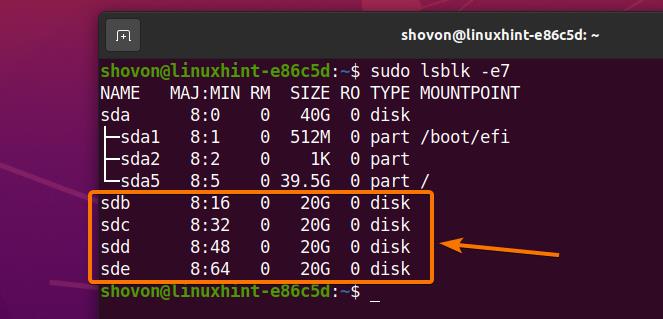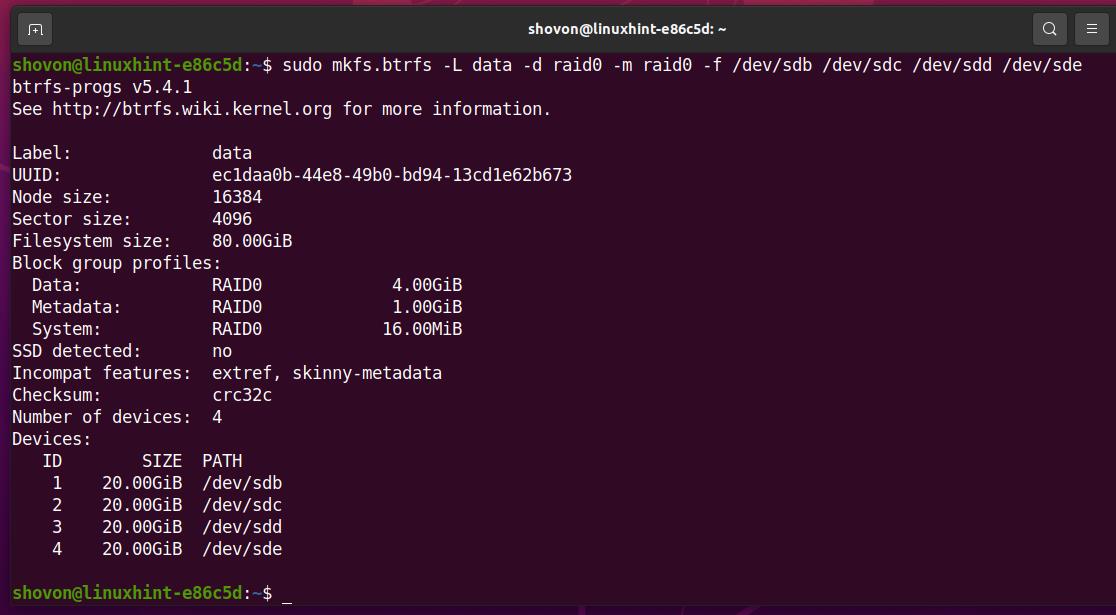I think you may be over-complicating the setup a little bit; setting up RAID on Btrfs is more simple than all of that, especially RAID0.
You can leave the installer out of it altogether–don’t worry about the disks at that stage, just pretend they aren’t even there.
Once you get the installation up, you can simultaneously format the drives as Btrfs and also identify them as RAID devices with mkfs.btrfs. See here: Using Btrfs with Multiple Devices - btrfs Wiki
# Stripe the data without mirroring, metadata are mirrored
mkfs.btrfs -d raid0 /dev/sdb /dev/sdc
![]() That command is just an example, be sure to read through the rest of the available options to determine which specific flags you want to use (see another example below).
That command is just an example, be sure to read through the rest of the available options to determine which specific flags you want to use (see another example below).
That’s basically it, you don’t even need to change fstab or anything because you can mount a Btrfs RAID using any disk used in creating the RAID. Grub is definitely not part of it, I’m not sure where you are getting that from.
This looks like a pretty good write-up if you want a (rather short) walk-through for the needed steps: How to Set Up Btrfs RAID
Setting Up RAID-0
In this section, you will learn how to set up a Btrfs RAID in the RAID-0 configuration using four HDDs (sdb, sdc, sdd, and sde). The HDDs are 20 GB in size.
$ sudo lsblk -e7
To create a Btrfs RAID in the RAID-0 configuration using four HDDs (sdb, sdc, sdd, and sde) run the following command:
$ sudo mkfs.btrfs -L data -d raid0 -m raid0 -f /dev/sdb /dev/sdc /dev/sdd /dev/sde
Here,
- The –L option is used to set the filesystem label data.
- The –d option is used to set the RAID profile raid0 for the filesystem data.
- The –m option is used to set the RAID profile raid0 for the filesystem metadata.
- The –f option is used to force the creation of the Btrfs filesystem, even if any of the HDDs have an existing filesystem.
The Btrfs filesystem data in the RAID-0 configuration should now be created, as you can see in the screenshot below.
You can mount the Btrfs RAID using any HDD/SSD you used to create the RAID.
The article continues with a few steps for confirming the RAID is properly configured and for checking filesystem usage information


